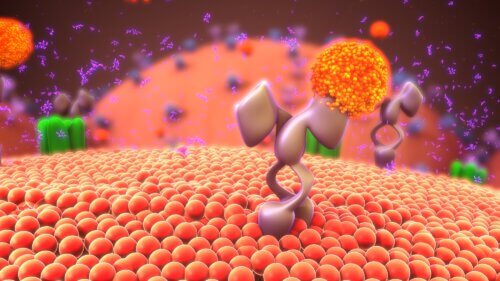Currently, the biological process of identifying the specific role of a receptor can take many years. The new method developed by Dr. Judit Somech significantly shortens the duration of time. Since most of the drugs today work by activating or blocking receptors, the new method has the ability to significantly shorten the drug production process

A new study conducted at the university and published in the prestigious journal Scientific Reports Uses computational methods from the field of "BIG DATA" to discover the roles of the various receptors that are located on the membrane of the cells of the human body and are responsible for intercellular communication in the body. "Nowadays, in order to discover the roles of the various receptors, a biological study must be conducted that can last for many years. The new method based on network analysis of tens of thousands of values of gene expression succeeds in predicting at the level of over 90% the metabolic functions of various receptors, some of which were unknown until now," said Dr. Judit Somech, the study's editor, from the Department of Information Systems.
A receptor is a protein that is usually found on the cell membrane to which a ligand binds, a small molecule that expresses Letter A chemical that the cell is designed to absorb and respond to. The role of the receptor, for example the insulin receptor, is to receive the information that comes from outside the cell, through the binding to the ligand (for example insulin), and thus allow the cell to act in accordance with this information (for example absorption of sugars from the bloodstream into the cells after a meal).
There are different types of receptors: receptors that bind to hormones, for example that are related to metabolism and growth, receptors that bind to neurotransmitters and receptors of the immune system. According to the researcher, many drugs are based on a change in the transmission of "information" to the cells by activating or blocking the activity of various receptors, hence the great importance of understanding their roles in the body. In the current study, Dr. Somech chose to focus on metabolic receptors and growth hormone receptors. Today, researchers know about 1000 different receptors, of which about 60 have a known metabolic function or those that respond to growth hormones. Some of the receptors have roles and mechanisms of action that have not yet been deciphered. The method developed by Dr. Somech is based on data analysis of expression values of tens of thousands of genes taken from biopsies of hundreds of people.
In the first step, Dr. Somech's computational method was able to successfully predict 55 known metabolic receptors - that is, the method predicted based on computational analysis alone that these 55 receptors are indeed metabolic receptors, as proven by decades of biological research. At this stage, in addition to the group of metabolic receptors, the method was also tested against a group of non-metabolic receptors and successfully predicted over 90% which receptor belongs to which group.
After the success of the method in predicting known metabolic roles of receptors, Dr. Somek applied the method to 700 receptors and found a group of 21 receptors that the method predicts are metabolic receptors and are not known as such or whose function is unknown. That is, it is about the addition of metabolic receptors that the standard biological research will take many years to understand and prove that it is indeed metabolic receptors.
One of them, it turns out, was only recently recognized as such, which strengthens the method. "Only today, after more than 10 years of research since its discovery, is it beginning to become clear to researchers that the PLGRKT receptor, which binds to a ligand that has a role in controlling inflammation and coagulation, has a crucial metabolic role in fat cells. Our method predicted this in a much shorter time. Of course, in the end the biological research will have to confirm the findings in a biological experiment, but the method I developed allows them to stop 'probing in the dark' among hundreds of receptors and focus on the receptors that the method points to," concluded Dr. Somech.
More of the topic in Hayadan:
